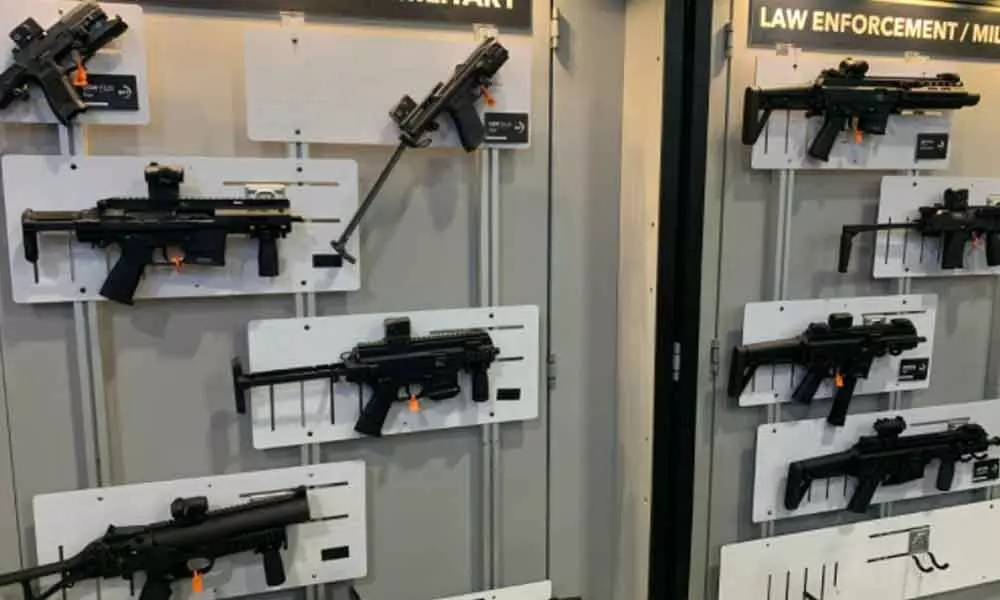Veteran, grassroots innovations key to Atma Nirbharta in defence production
Indian policymakers and planners can learn lessons from the US military-industrial complex
image for illustrative purpose

FINANCE Minister Nirmala Sitharaman made a series of announcements for the defence in the Union Budget 2022, which significantly boosts the role of MSME in India's defence production and manufacturing.
The minister has committed 68 per cent of the capital procurement budget in defence for the domestic industry in 2022-23. Further, the "defence R&D will be opened up for industry, startups and academia with 25 per cent of defence R&D budget."
The question is can these measures propel innovation and lead to the development of cutting edge-technology needed to modernise our forces?
The answer is No. Let me explain.
Last week, I attended the annual Shot Show in the US. The show is a commercial and military equipment event held in Las Vegas. The "show is restricted to formal members of the shooting, hunting, military and outdoor trade industries, including commercial buyers and sellers of military, law enforcement and tactical products, and is not open to the general public." The show is among the top 25 trade shows in the US, and it attracts over 60,000.
I interacted with tens of micro and small entrepreneurs at the show who drive a part of the American military-industrial complex with their innovations and entrepreneurial spirit.
Below are the three lessons from the show that the Indian defence industry can benefit from.
1. Veterans as Innovators: At the heart of American military innovation are the veterans. They are researching, designing and building products for their military. Because, as the saying goes - "No one knows where the shoe pinches, but he who wears it." American veterans are at the forefront of developing tactical weapons, military equipment, gear and accessories.
Currently, Indian veterans' involvement in military innovation is negligible; thus, there is a need to encourage them to join the moment as entrepreneurs, advisors, or in the R&D. Their experience and insight would go a long way in building the right product for the Indian military.
2. Build robust military-industrial complex: The American military-industrial complex works in total sync with the needs of its military, thereby designing, developing and manufacturing end-to-end products and solutions, be it pins, latches to tactical military hardware.
Since Independence, India has set up numerous mega military R&D, manufacturing and production facilities "to achieve self-reliance in defence production." The sector had access to a multi-billion dollar defence budget and skilled talent pool that successfully built a world-class space program. However, its defence planners failed in developing a mature military-industrial complex.
In recent years, the government of India has initiated various schemes like Make in India, Startup India, Atal Innovation Mission to encourage innovation and entrepreneurship among Indian SMEs and startups with a special focus on defence.
The Union Budget 2022 has removed barriers between private industry and PSU such as DRDO. However, policymakers should explore ways to create an ideal environment and opportunities to foster deeper engagement and meaningful collaboration between the public sector units and private industries to build a mature and robust military-industrial complex.
3. Encourage grassroots innovation: Military innovations happen at the grassroots in the US. At the equipment show, I came across men who built products and solutions as they were not happy with the equipment issued by their military. And this motivated them to innovate alternatives or make simple changes to designs. Many such innovations have now become part of the regular military supply.
The Indian military, too, has some of the finest and smart men and women spread across the organisation. Involving them in designing and development of solutions can enhance their day-to-day operational needs, which can go a long way in encouraging grassroots innovations.
With a defence budget of $72 billion, India is the world's third-largest defence equipment importer. And it is expected to "spend around $220 billion to modernise its armed forces in the coming decade."
However, it isn't easy to comprehend the challenges involved in achieving self-sufficiency for the Indian military if we continue to see innovations in defence from the lens of building tanks, fighter jets, and aircraft carriers. A modern army requires a plethora of equipment and gears that go into making it modern, efficient and ready to fight modern warfare.
(The author is Founder, MyStartup TV)

